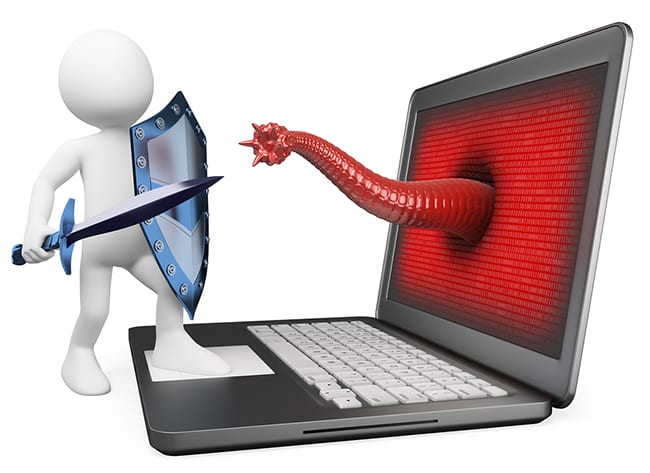Brick and mortar (BAM) retailers have faced a strenuous uphill battle over the past 15 years. And it’s shaping up to continue to be a rigorous hike, ascending rocky plains with no real mountaintop in sight in the near future. Namely, this is because the ecommerce monster, what one could say is an invasive species for BAM retailers, has been slowly eating up the food source in the battle of bricks vs. clicks.
It All Started in the Seventies
Rewind back 40 years ago, during the ‘70s, when the baby boomers were the next generation, and that’s when you can really find the fuel that powered the BAM building frenzy. As a Forbes article explains, the mantra was “If you build it, they will come.” And indeed it worked. Shopping malls were being erected nationwide at such a pace that the U.S. was consuming more cement than any other nation.
Baby boomers loved the convenience of nearby shopping malls, where they had easy access to a mecca of stores that sold all the goods they needed to accommodate their expanding families. The cement behemoths with large parking lots were the ideal stomping grounds for boomers’ spend-happy needs, replete with a confluence of stores that appeased their buying mindset.
Then generate X and Y came along. And then, the internet became a realization for society. After the internet became mainstream in the early 90s – it was birthed officially in 1962, when J.C.R. Licklider of MIT sent some of the first web/social conveyances that discussed his illustrious vision of a “Galactic Network“, thus codifying the first instance of social usage and communication online – the official battle of bricks vs. clicks began.
the Ecommerce Battery Pack
Still, online shopping in the early ‘90s was hardly even a trite comparison to the trillion dollar beast that e-retailing has evolved into today. This is back during the day where AOL was the dominant force, and where internet time was paid for by the minute, and people were still using antiquated Motorola flip-phones that didn’t even have internalized contact lists.
Brick and mortar continued to prosper during this time, namely because online prices were offset by the cost of shipping, the cost of using the internet, lagging dial-up speeds and overall lack of demand from shoppers, who would rather, in most cases, get their wares from the local store. Thanks to Darwinism, and a dash of technology, the internet slowly did speed up. By the time the ‘2000s arrived, BAMs suddenly had a competing force to deal with.
As 2008 set in, the flurry of toxic, global economic meltdown that ensued saw many brick and mortar retailers downsizing to make ends meet. Suddenly, consumers were more interested in using ecommerce. In entered juggernaut online conglomerates like Amazon and eBay, and, well, the rest is sort of history.
2012 Set an Ecommerce Milestone
The battle of bricks vs. clicks really heated up in 2012. According to a report by ComScore, $38.7 billion was spent by consumers online between just the months of November and December during this year, setting an all-time record for sales while earmarking a 16% increase from the year previous.
Of course, something new was on the plate for the ecommerce monster. The gourmet feast it devoured this time was national “free shipping day,” Monday, December 17, 2012. On that day alone, e-retailers had their biggest realization yet: offering free shipping saw $1.01 billion in sales come from online spenders, demonstrating a staggering 76% increase from sales on the same online shopping holiday from a year prior (December 15th, 2011).
E-Tail Godzilla
According to a number of recent statistics and findings, malls are suffering their greatest level of vacancies since the building boom of them occurred back in the ‘70s. Statistics culled have found that vacancy rates hover around an unhealthy 35% in over 200 different shopping malls nationwide, telling of how clicks are ultimately winning the battle over bricks.
A healthier economy that is more conducive to online shopping is the primary contributing factor. Consumers are increasingly choosing to opt for the convenience of always-open online stores that offer free shipping and free returns, and that don’t require a time-consuming visit to a shopping mall, particularly during the mayhem of the holiday shopping season.
The e-tail Godzilla has done so much damage, in fact, that a new website has popped up and has become very popular in recent years documenting the brackish state of local shopping malls. The website Dead Malls follows the battle for clicks vs. bricks, offering an interesting anecdotal taste of brick and mortar’s sordid past, and its dichotomy to e-tailing.
If You Can’t Beat Them, Join Them
But brick and mortar is far from dead just yet. Many of these retailers have realized that in order to survive they must man two fronts. And plenty are doing so wonderful, namely the big box stores like Best Buy, Target, Wal-Mart and others. Major news mediums like the Houston Chronicle now offer step-by-step guides that instruct BAMs on the process of gaining an online presence and going to e-retail with their operations.
This, in turn, has spawned a new shopping phenomenon commonly referred to as “showrooming and webrooming.”
Webrooming
Webrooming is the manner by which a consumer browses for an item they want to buy online, but then makes a trip to the local store that offers it so they can haggle for price-matching and get the item right away; as opposed to having to wait for it to be shipped to them from an online store. In a recent report by Accenture, 65% of shoppers actually showroom or webroom to make their purchasing decisions over the holidays.
Showrooming
In the very same report by Accenture, the topic of showrooming was also covered. This is where a shopper heads to a brick and mortar store to shop, initially. However, once there, the shopper then looks for the same product online (typically from their mobile phone) to try and find a better deal. In 2013, about 54% of shoppers were showrooming, a percentage that increased to 63% in 2014, and that could very well surpass 70% in 2015.
Webrooming/Showrooming Statistics
- Over 90% of shoppers cited that discounts were very important when making a buying decision.
- Over 48% will be making their primary purchases on products that are offered at discount prices or that are offered on sale.
- Over 60% of shoppers polled said that a discount being offered needs to be greater than 30% off the list price to influence their purchasing decision.
- Over 38% of shoppers are using their smartphones or computers to track product prices this year.
- Over 44% of shoppers will use a price-matching service to find the best deal.
- Over 23% of shoppers desire a generous and extended returns policy when making online purchases this year.
Growth Tells the Real Story
Think back to 2004, when ecommerce was still in diapers. It represented just 2% of all retailing sales, says the U.S. Census Bureau. Hardly an impressive number, but still denoting of a multibillion dollar industry. By 2013, ecommerce accounted for 6% of all retail sales in the U.S.
For the end of the third quarter in 2013, retail sales had measurable growth of 4.7% year-over-year. But e-retailing dwarfed this metric, showing growth of 18.2% during this same time period. Tantamount to that is the fact that 2013 saw a $33 billion gain in e-retail from the same time the year prior, an increase of 33%, according to CBRE Research.
Mobile Coupons Paving Way
One thing that ecommerce has going for it that BAMs currently lack are instantly redeemable digital coupons. Sure, a mobile user can still get in their car, drive to the mall, park, walk in and present a Groupon discount or a Living Social deal; or even a coupon that they can show on their phone. But, in reality, it’s farfetched to see this entire process ever being completed when consumers can instead instantly redeem said coupons in an online capacity.
If a brick and mortar retailer does not have a strong online presence, they are missing out on the next big phase in online shopping: digital coupons that can be instantly redeemed and socially shared by consumers in a viral capacity.
In 2013, an Internet Retailer report found that over 66 million digital coupons were redeemed, accounting for 2.3% of all coupon usage nationwide (that’s from more than 2.9 billion coupons, both digital and printed, that were generated during that calendar year). A study by Inmar found that 70% of consumers want coupons for the products they buy the most, and they want you to send coupons to them, too; whether that’s by email or phone.
- 55% of internet users in the U.S. redeem mobile coupons from social networks.
- Mobile coupon users will represent 83% of all digital coupon users by 2016.
- Over 70% of digital coupons were redeemed via mobile phone in 2014.
- 75% of all mobile shoppers have redeemed a coupon, most often from a social network.
Social Shopping
Another backbone that’s helped fuel impressive ecommerce growth, in juxtaposition to a snail-paced brick and mortar retail growth rate, is social shopping. Networks like Facebook, Twitter, Polyvore, Pinterest and Instagram – to name a few – get nearly as much traffic, combined, as the world’s leading search engine does (Google). And e-retailers are cashing in on these emerging trends, and have been, capitalizing on the opportunity to get their products in front of their target demographics in a personalized and influencing manner.
- According to Statistica, over 100 million people shop via their mobile devices regularly in the U.S.
- By the year 2018, this number is expected to shoot up by 49%, surpassing 150 million mobile shoppers; or about half the current U.S. population.
- In 2014 alone, reports show that mobile shopping raked in $17 billion in revenue, accounting for a large segment of e-tailing altogether.
Social shopping accounts for 5% of all spending online at the present, according to an Invesp report. And social sharing has been incremental in that growth, with an estimated 43% of shoppers being influenced to make a purchase after seeing social shares and posts from either other shoppers or the brands they follow or are advertised to by, so says a study by Vision Critical.
Overview of Online Shopping Facts
Telling of how clicks are defeating bricks in the battle for retailing supremacy is that fact that ecommerce represents the healthiest, fast-growing industry globally. From 2008 to the present day, online sales have skyrocketed by 40%. Today, ecommerce represents a sizable chunk of the worldwide retail pie, accounting for 11% of all retail sales globally.
The e-retailing monster is hungry, too, and consumes $1.4 trillion in shoppers’ monies each year, a number that some experts, like BigCommerce, say will surpass $2 trillion by the year 2016. No longer is retailing dominated by female buyers, either. Thanks to the internet, the demographic is nearly even.
- Female shoppers accounted for 57% of internet purchases, while men accounted for about 52% in 2013, according to a report by SeeWhy.
- 18% of women bought something from their smartphone versus 22% of men in 2013.
- Millenials, unsurprisingly, are the largest spenders, feeding e-retail an average of $2,000 per year.
- Baby boomers are getting on board, with about 25% of all mobile shoppers in the U.S. being over the age of 55.
Think tank IBM says that in 2014, online sales had risen by 13.8% from the previous year. This factored out to be a healthy 15% growth from year-to-year. This represents about double the growth from 2012 to 2013, telling of just how hungry the ecommerce monster is and why brick and mortar’s retailing heydays may be numbered in the future.
The battle of clicks vs. bricks continues. Only time will tell if it someday levels out and a new king of retail is crowned. See you all at the coronation.










